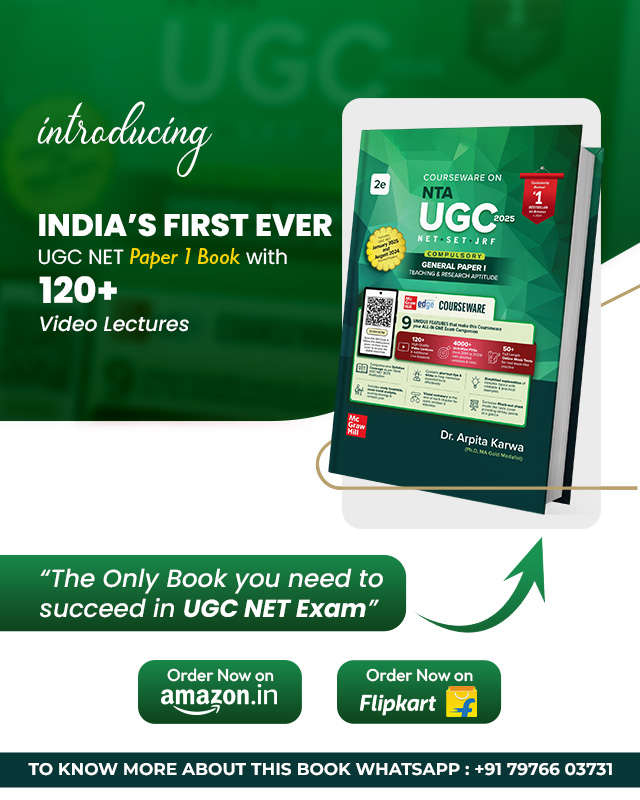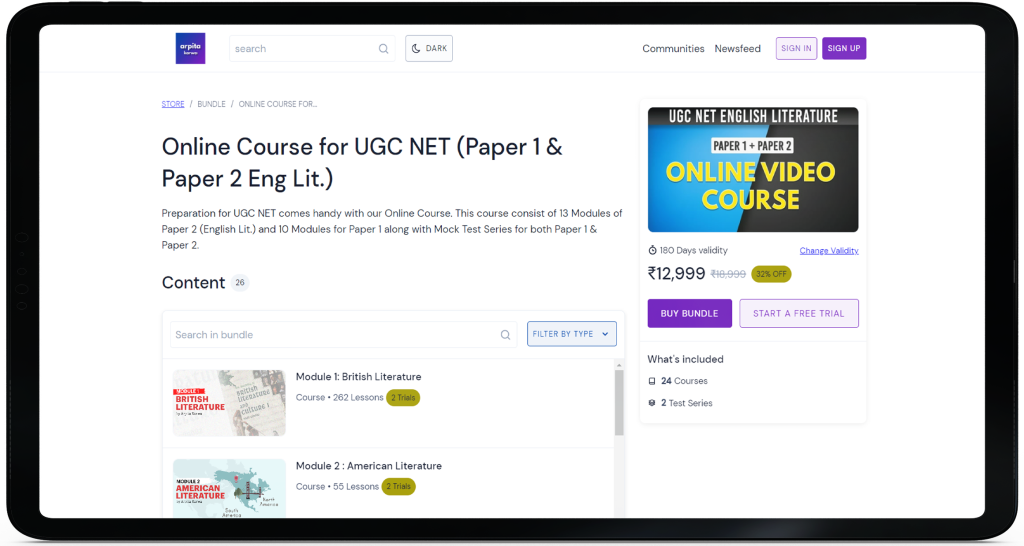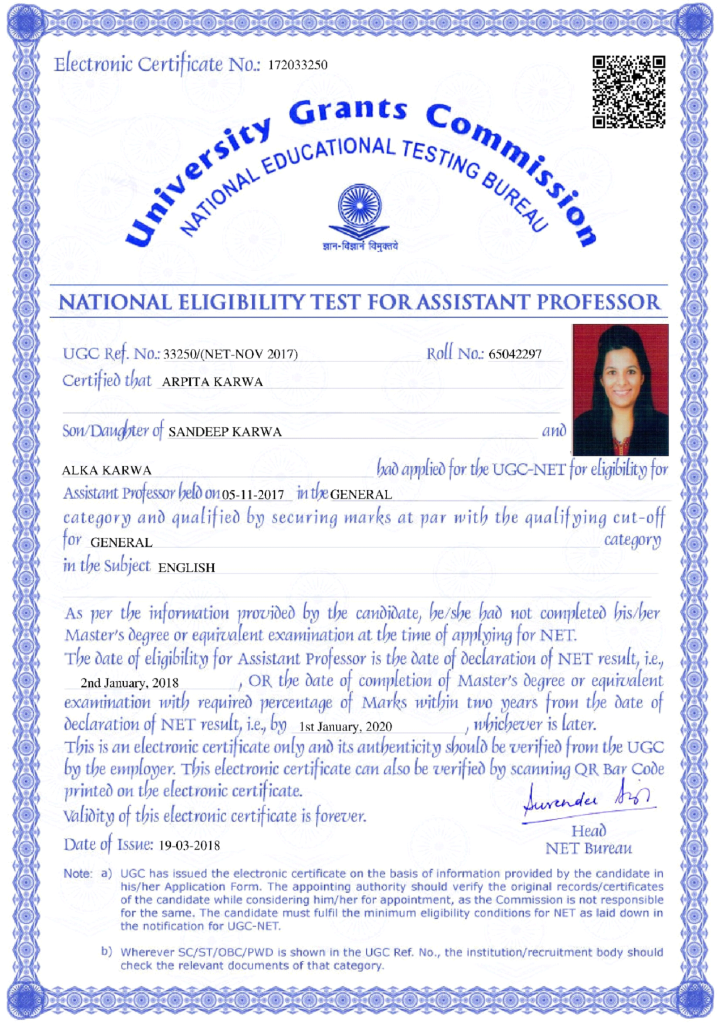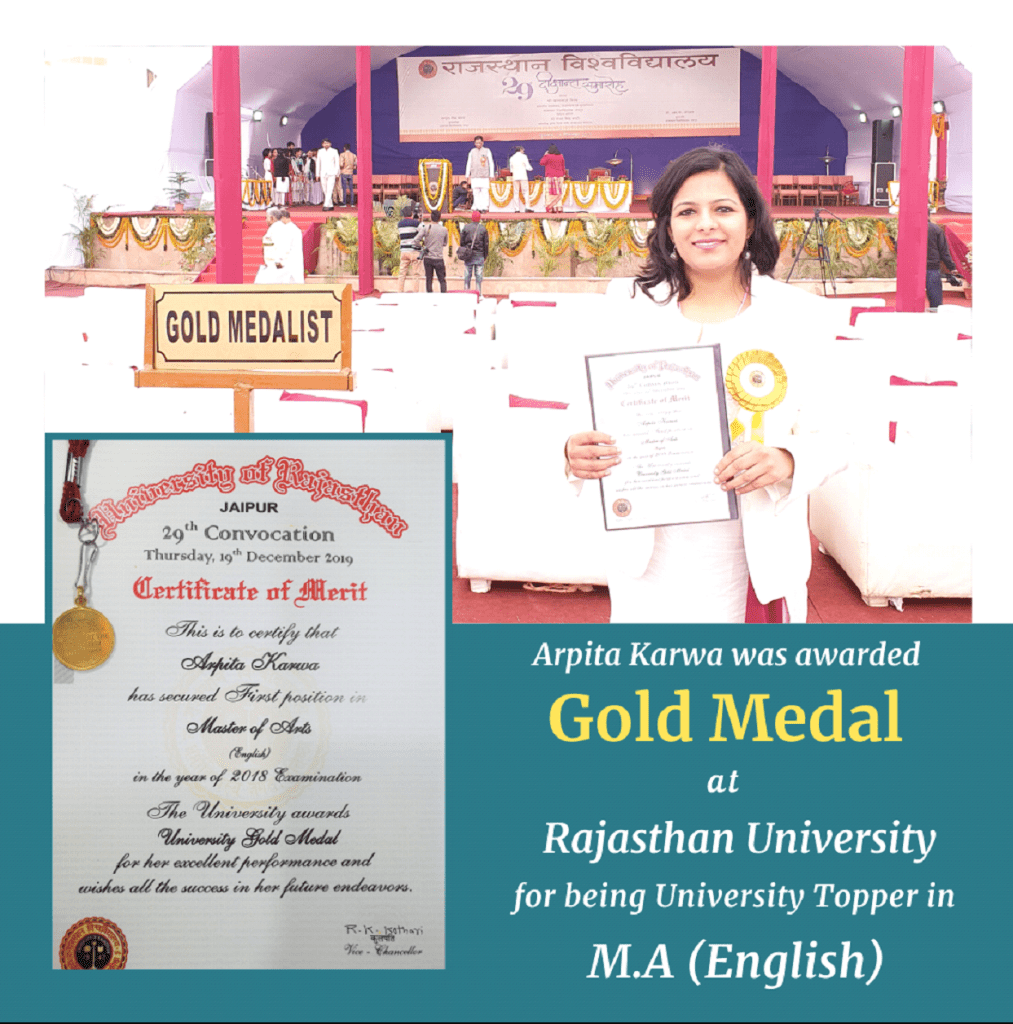October 2022 : Paper 1 (Conduced on 13th October 2022 Morning Shift))
June 19, 2023 2023-12-25 11:37October 2022 : Paper 1 (Conduced on 13th October 2022 Morning Shift))
October 2022 : Paper 1 (Conduced on 13th October 2022 Morning Shift)
The following table shows the percentage (%) distribution of five different types of cars (A-E) produced by a company during two consecutive years 2019 and 2020. The total number of cars produced was 4,50,000 in the years 2019 and 5,20,000 in the year 2020.
Based on the data in the table, answer the question 1-5:
Year-wise percentage distribution of production of cars
|
Year |
Type of car produced (in %) |
||||
|
A |
B |
C |
D |
E |
|
|
2019 |
15% |
25% |
30% |
10% |
20% |
|
2020 |
10% |
30% |
25% |
25% |
10% |
Q.1) If the percentage production of type-B cars in 2020 was the same as that of 2019, then what would have been the number of type-B cars produced in 2020?
[1] 112500
[2] 120000
[3] 130000
[4] 135000
Answer: [3] 130000
Q.2) What is the ratio of number of type-C cars produced in 2019 to the number of type-D cars produced in 2020?
[1] 29:27
[2] 23:22
[3] 27:26
[4] 27:23
Answer: [3] 27:26
Q.3) What was the difference in the production of number of type-C cars between 2019 and 2020?
[1] 5000
[2] 7500
[3] 8500
[4] 2500
Answer: [1] 5000
Q.4) If the number of type-A cars manufactured in 2020 was the same as that of 2019, then what would have been its approximate percentage share in the total production of 2020?
[1] 11%
[2] 18%
[3] 15%
[4] 9%
Answer: [2] 18%
Q.5) If 85% of type-E cars produced during 2019 and 2020 together are sold by the company, then how many type-E cars are left unsold by the company?
[1] 21825
[2] 29100
[3] 25200
[4] 21300
Answer: [4] 21300
Q.6) Following activities are related to the conduct of experiment in social research:
[1] Control the experimental environment
[2] Pilot test, revise and test
[3] Empathy with the participants
[4] Praising the good qualities of the participant
[5] Specify the treatment levels
Choose the most appropriate answer from the options given below:
[1] (A), (B), (C)only
[2] (B), (C), (E)only
[3] (C), (D), (E)only
[4] (A), (B), (E)only
Answer: [4] (A), (B), (E)only
Q.7) IIT Bombay X is a non-profit MOOC platform developed by IIT Bombay using the open-source platform__________
[1] JOOMLA
[2] Sakai
[3] Drupal
[4] Open edX
Answer: [4] Open edX
Q.8) Which of the following file formats are appropriate for distributing video files across the internet?
[1] .FLA
[2] .MPS
[3] .WMA
[4] .AIF
[5] .AVI
Choose the correct answer from the options given below:
[1] (B) and (C) only
[2] (A) and (E) only
[3] (D) and (E) only
[4] (C) and (D) only
Answer: [2] (A) and (E) only
Q.9) In a learner centered teaching environment teachers
[1] Recognise that all learners are unique and utilise different teaching styles
[2] Do not provide structure and direction
[3] Make decisions about how and what learners will learn
[4] Do not facilitate learner’s decision-making process
Answer: [1] Recognise that all learners are unique and utilise different teaching styles
Q.10) Which of the following are true with regard to mass communication?
[1] Messages are prepared by non-professionals
[2] Messages are prepared by professionals
[3] Messages are rapidly disseminated
[4] Messages are supposed to be understood
[5] Media audiences are homogenous
Choose the correct answer from the options given below:
[1] (A), (B), (C)only
[2] (C), (D), (E)only
[3] (B), (C), (D)only
[4] (A), (D), (E)only
Answer: [3] (B), (C), (D)only
Q.11) Match list I with list II
List I
In a square of opposition
[A] ‘A’ being given as true
[B] ‘E’ being given as true
[C] ‘T’ being given as true
[D] ‘O’ being given as true
List II
Resultant
[I] ‘O’ is undetermined
[II] ‘T’ is undetermined
[III] ‘T’ is true
[IV] ‘T’ is false
Choose the correct answer from the options given below:
[1] (A)-(II), (B)-(IV), (C)-(I), (D)-(III)
[2] (A)-(IV), (B)-(I), (C)-(III), (D)-(II)
[3] (A)-(I), (B)-(IV), (C), (II), (D)-(III)
[4] (A)-(III), (B)-(IV), (C)-(I), (D)-(II)
Answer: [4] (A)-(III), (B)-(IV), (C)-(I), (D)-(II)
Q.12) Given below are two statements:
Statement(I): The disadvantage of inter-personal communication is the availability of immediate feedback.
Statement (II): The greatest advantage of mass communication is its delayed feedback.
In the light of two above statement.Choose the most appropriate answer from the options given below:
[1] Both statement (I) and statement (II) are correct
[2] Both statement (I) and statement (II) are incorrect
[3] Statement (I) is correct, but statement (II) is incorrect
[4] Statement (I) is incorrect, but statement (II) is correct
Answer: [2] Both statement (I) and statement (II) are incorrect
Q.13) In communication, meanings refer to a person’s
[1] Notions about the world
[2] Internal responses to a message
[3] Subsuming messages for suppression
[4] External responses only
Answer: [2] Internal responses to a message
Q.14) Match list I with list II
ListI
Research form
(A) Qualitative research
(B)Qualitativeresearch
(C) Triangulation
(D) Metaanalysis
List II
Description
(1) File drawer problem
(2) Convergence of findings Based multiple methods
(3) Statistical analysis
(4) Interpretive
Choose the correct answer from the options given below:
[1] (A)-(III), (B)-(II), (C)-(IV), (D)-(I)
[2] (A)-(IV), (B)-(III), (C)-(II), (D)-(I)
[3] (A)-(I), (B)-(IV), (C)-(II), (D)-(III)
[4] (A)-(III), (B)-(II), (C)-(IV), (D)-(I)
Answer: (2) (A)-(IV), (B)-(III), (C)-(II), (D)-(I)
Q.15) Identify the correct arrangement of the following different types of computer networks in the descending order of their geographic area coverage.
[1] MAN
[2] WAN
[3] LAN
Choose the correct answer from the options given below:
[1] (A), (B), (C)
[2] (B), (C), (A)
[3] (B), (A), (C)
[4] (C), (A), (B)
Answer: [3] (B), (A), (C)
Q.16) Match list I with list II
List I
Child development
[A] Cliques
[B] Crowds
[C] Identity
[D] Moratorium
List II
Feature
[I] Less intimate, more loosely organized groups
[II] General Sense of oneself along with all their beliefs, emotions and attitudes.
[III] Exploration with a delay in commitment to personal and occupational choice
[IV] Relatively small, friendship-based groups
Choose the correct answer from the options given below:
[1] (A)-(III), (B)-(IV), (C)-(I), (D)-(II)
[2] (A)-(II), (B)-(III), (C)-(IV), (D)-(I)
[3] (A)-(I), (B)-(II), (C)-(III), (D)-(IV)
[4] (A)-(IV), (B)-(I), (C)-(II), (D)-(III)
Answer: [4] (A)-(IV), (B)-(I), (C)-(II), (D)-(III)
Q.17) If a survey is conducted telephonically, which among the following statements is true?
[1] It improves quality of data
[2] It improves the validity research
[3] It reduces the cost of data collection
[4] It makes participants comfortable
Answer: [3] It reduces the cost of data collection
Q.18) Given below are two statements:
Statement I: An inference which is based on the middle term being only positively related to the major term is called Kevalanvayi.
Statement II: In Kevalanvayi anumana, the knowledge of Vyapti between the middle and major terms is arrived at through the method of argument in absence.
In the light of the above statements, choose the correct answer from the options given below:
[1] Both statement I and statement II are true
[2] Both statement I and statement II are false
[3] Statement I is true, but statement II is false
[4] Statement I is false, but statement II is true
Answer: [3] Statement I is true, but statement II is false
Q.19) As envisaged in national education policy (2020), all higher educational institutions will aim to have a student strength of ________ by 2040.
[1] >5000
[2] >4000
[3] >3000
[4] >2500
Answer: [1] >5000
Q.20) Identify the correct sequence of average noise levels in increasing order of their magnitude from different sources.
[A] City Street corner
[B] Conversational speech
[C] Highway
[D] Aircraft noise during take off
[E] Typical office
Choose the correct answer from the options given below:
[1] (E), (A), (B), (C), (D)
[2] (E), (B), (A), (C), (D)
[3] (B), (E), (A), (C), (D)
[4] (B), (E), (A), (d), (c)
Answer: [2] (E), (B), (A), (C), (D)
Q.21) Given below are two statements:
Statement (I): If the length of a psychological test is increased it improves both reliability and validity.
Statement (II): Score of a test can be interpreted without referring to its norm.
In the light of the above statements, choose the most appropriate answer from the options given below:
[1] Both statement (I ) and statement (II) are correct
[2] Both statement (I ) and statement (II) are incorrect
[3] Statement (I ) is correct, but statement (II) is incorrect
[4] Statement (I ) is incorrect, but statement (II) is correct
Answer: [3] Statement (I) is correct, but statement (II) is incorrect
Q.22) Given below are two statements: one is labeled as assertion (A ) and the other is labeled as reason(R)
Assertion (A): Energy produced from biomass is considered ‘carbon neutral’.
Reason (R): Biomass does not add CO2 to the atmosphere.
In the light of the above statements, choose the most appropriate answer from the options given below:
[1] Both (A ) and (R ) are correct and (R ) is the correct explanation of (A)
[2] Both (A ) and (R ) are correct but (R ) is NOT the correct explanation of (A)
[3] (A ) is correct but (R ) is not correct
[4] (A ) is not correct but (R ) is correct
Answer: [3] (A) is correct but (R) is not correct
Q.23) Source of arsenic pollution in the ground water is
[1] Industrial ettluents
[2] Deep underground formations
[3] Dyeing industries
[4] Agricultural wastes
Answer: [1] Industrial ettluents & [2] Deep underground formations
Q.24) In ancient Indian education system, learners were given training in following occupations in the fields of
[1] Architecture
[2] Animal husbandry
[3] Agriculture
[4] Administration
[5] Dairy farming
Choose the correct answer from the options given below:
[1] (A), (C), (E)only
[2] (B), (C), (E)only
[3] (A), (B), (C), (E)only
[4] (B), (C), (D), (E)only
Answer: [3] (A), (B), (C), (E) only
Q.25) Given below are two statements: one is labelled as assertion (A) and other is labeled as reason (R)
Assertion (A): A valid deductive argument with all true premises will lead to a true conclusion.
Reason (R): In a valid deductive argument, the conclusion follows from the premises with absolute necessity.
In the light of the above statements, choose the correct answer from the options given below:
[1] Both (A ) and (R ) are true and (R ) is the correct explanation of (A)
[2] Both (A ) and (R ) are true but (R ) is NOT the correct explanation of (A)
[3] (A ) is true but (R ) is false
[4] (A) is false but (R ) is true
Answer: [1] Both (A) and (R) are true and (R) is the correct explanation of (A)
Q.26) In the context of vocational education, the organization ‘NSDC’ is
[1] National skill development council
[2] National skill development corporation
[3] National skill documentation centre
[4] National sector development corporation
Answer: [2] National skill development corporation
Q.27) A software is termed as an open-source software if
[1] The developer company is open 24×7
[2] Its source code is available to share, study and modify
[3] It can be downloaded from the internet
[4] It is available free of cost
Answer: [2] Its source code is available to share, study and modify
Q.28) Match list I with list II
List I
Medium
[A] Newspaper
[B] Radio
[C] Television
[D] Film
List II
User Vehicle
[I] URSA mini pro
[II] Satellite dishes
[III] Electro Magnetic waves
[IV] Rubber plate
Choose the correct answer from the options given below:
[1] (A)-(IV), (B)-(III), (C)-(II), (D)-(I)
[2] (A)-(III), (B)-(II), (C)-(I), (D)-(IV)
[3] (A)-(II), (B)-(I), (C)-(IV), (D)-(III)
[4] (A)-(I), (B)-(II), (C)-(III), (D)-(IV)
Answer: [1] (A)-(IV), (B)-(III), (C)-(II), (D)-(I)
Q.29) Given below are two statements:
Statement (I): One-fourth of sixty percent of a number is equal to two-fifth of twenty percent of another number. Then the respective ratio of the first number to the second number is 8:15.
Statement (II): A student is studying for a test from 11:00am to 8:00pm on weekdays and one-third of that time on Saturday. On Sunday, he takes a break and goes for a movie. The fractional part of the entire week that the student is studying is 3/7.
In the light of the above statements, choose the correct answer from the options given below:
[1] Both Statement (I ) and statement (II) are true
[2] Both statement (I ) and statement (II) are false
[3] Statement (I ) is true, but statement (II) is false
[4] Statement (I ) is false, but statement (II) is true
Answer: [3] Statement (I) is true, but statement (II) is false
Q.30) Given below are two statements: One is labelled as assertion (A ) and the other is labeled as reason (R)
Assertion (A): Sound is non eternal because it is caused.
Reason (R): The middle term does not prove the eternality of sound but it’s non-eternality.
In the light of the above statements, choose the correct answer from the options given below:
[1] Both (A ) and (R ) are true and (R ) is the correct explanation of (A)
[2] Both (A ) and (R ) are true but (R ) is not the correct explanation of (A)
[3] (A ) is true but (R ) is false
[4] (A ) is false but (R ) is true
Answer: [1] Both (A) and (R) are true and (R) is the correct explanation of (A)
Q.31) Identify the correct sequence of information processing in communication
(A) Input
(B) Output
(C) Data entry
(D) Processing
(E) Storage
Choose the correct answer from the options given below:
[1] (A), (B), (E), (D), (C)
[2] (B), (D), (E), (A), (C)
[3] (C), (A), (D), (E), (B)
[4] (A), (C), (D), (E), (b)
Answer: [4] (A), (C), (D), (E), (B)
Q.32) Which one of the following formal fallacies is committed in the given argument?
All snakes are reptiles.
Some snakes are poisonous creatures.
Therefore, all poisonous creatures are reptiles.
[1] Fallacy of Illicit process of major term
[2] Fallacy of Illicit process of minor term
[3] Fallacy of undistributed middle term
[4] Fallacy of four terms
Answer: [2] Fallacy of Illicit process of minor term
Q.33) Given below are two statements:
Statement I: Classical smog is formed when oxides of nitrogen combine with particulate matter especially in summer season.
Statement II: Classical smog reduces atmospheric visibility to a great extent.
In the light of the above statements, choose the correct answer from the options given below:
[1] Both statement I and statement II are true
[2] Both statement I and statement II are false
[3] Statement I is true, but statement II is false
[4] Statement I is false, but statement II is true
Answer: [4] Statement I is false, but statement II is true
Q.34) Given below are two statements: one is labeled as assertion (A ) and the other is labeled as reason (R)
Assertion (A): Universities and higher education institutions are the important foundations to the growth of any country.
Reason (R): Intellectual property right acts as a shield for invention to be misused by third parties.
In the light of the above statement, choose the most appropriate answer from the options given below:
[1] Both ( A) and (R ) are correct and (R ) is the correct explanation of (A)
[2] Both (A ) and ( R) are correct but (R ) is NOT the correct explanation of (A)
[3] ( A) is correct but ( R) is not correct
[4] ( A) is not correct but ( R) is correct
Answer: [2] Both (A) and (R) are correct but (R) is NOT the correct explanation of (A)
Q.35) Given below are two statements in respect of computers:
Statement (I): A DVD-ROM is an optical storage media, and it can be written many times.
Statement (II): Software is loaded into secondary storage from RAM and is then executed by CPU.
In the light of the above statement, choose the correct answer from the options given below:
[1] Both statement (I ) and statement (II) are true
[2] Both statement ( I) and statement (II) are false
[3] Statement (I ) is true, but statement (II) is false
[4] Statement (I ) is false, but statement (II) is true
Answer: [2] Both statement (I) and statement (II) are false
Q.36) Given below are two statements:
Statement (I): A man sells his goods at 10% profit. If he sells his goods at 15% profit, he gets 160rupes more. The cost price of his goods is 4.200rupes
Statement (II): A man spends 80% of his earnings. His earnings increased by 25% and his expenses increased by 20%. The man’s savings thus increased by 45%.
In the light of the above statements, choose the correct answer from the options given below:
[1] Both statement (I ) and statement (II) are true
[2] Both statement (I ) and statement (II) are false
[3] Statement (I ) is true, but statement (II) is false
[4] Statement (I ) is false, but statement (II) is true
Answer: [4] Statement (I) is false, but statement (II) is true
Q.37) Koulberg’s theory of moral development comprises of following stages:
(A) Obedience orientation
(B) Intellectual disability orientation
(C) Rewards/exchange orientation
(D) Law and order orientation
(E) Social contract orientation
Choose the most appropriate answer from the options given below:
[1] (A), (B), (C), (D)only
[2] (A), (C), (D), (E)only
[3] (B), (C), (D), (E)only
[4] (A), (B), (D), (E)only
Answer: [2] (A), (C), (D), (E)only
Q.38) Which among the following is a valid criticism of experimental method in social sciences?
[1] Impossible to conduct in social situation
[2] Artificiality of laboratory condition
[3] Unavailability good experiments in social sciences
[4] Social research problems cannot be studied experimentally
Answer: [2] Artificiality of laboratory condition
Q.39) Which among the following was proposed by Kothari commission vis-à-vis language?
[1] Use of mother tongue as a medium of instruction
[2] Use of Hindi as a medium of instruction
[3] Two-language formula
[4] Three language formula
Answer: [4] Three language formula
Q.40) In a test consisting of 150 questions carrying 1 mark each, Rishab answered 80% of the first 75 questions correctly. What percent of the other 75 questions does he need to answer correctly to score 60% overall?
[1] 20
[2] 40
[3] 50
[4] 60
Answer: [2] 40
Q.41) The simple interest on a sum of money is 1/9 of the principal and the number of years is equal to the rate percent per annum. The rate percent per annum is:
[1] 3%
[2] 0.33%
[3] 3.33%
[4] 2.33%
Answer: [3] 3.33%
Q.42) The open-source platform ‘course builder’ on which NPTEL courses are seen, was created by _____
[1] Microsoft
[2] Google
[3] Oracle
[4] Wipro
Answer: [2] Google
Q.43) Match list I with list II
List I
(File extension)
[A] mp3
[B] xls
[C] jpeg
[D] mdb
List II
(File type)
[I] Image
[II] Music
[III] Data base
[IV] Spreadsheet
Choose the correct answer from the options given below:
[1] (A)-(I), (B)-(IV), (C)-(II), (D)-(III)
[2] (A)-(II), (B)-(IV), (C)-(I), (D)-(III)
[3] (A)-(II), (B)_(IV), (C)-(III), (D)-(I)
[4] (A)-(III), (B)-(II), (C)-(I), (D)-(IV)
Answer: [2] (A)-(II), (B)-(IV), (C)-(I), (D)-(III)
Q.44) What is the correct order of global warning potential (GWP) of following atmospheric chemical species?
[1] Chlorofluro carbon (CFC)
[2] Methane (CH4)
[3] Carbon dioxide (CO2)
[4] Nitrous oxide (N20)
Choose the correct answer from the options given below:
[1] D-B-C-A
[2] C-B-D-A
[3] A-B-C-D
[4] A-C-D-B
Answer: [2] C-B-D-A
Q.45) A man who can swim 48meter/minute in still water swims 200meter against the current and 200 meters with the current. If the difference between these two times is 10 minutes, then what is the speed of the current?
[1] 30 meter/minute
[2] 31 meter/minute
[3] 29 meter/minute
[4] 32 meter/minute
Answer: [4] 32 meter/minute
Read the following passage and answer questions from 46 to 50.
Television is a cultural commodity. It works within an economically determined capitalist economy. but when we have said that about it we have said both much and remarkably little. There is a financial economy within which wealth circulates, and a cultural economy within which meanings and pleasures circulate, and the relationship between them is not as deterministic as some theorists have proposed. In the financial economy, television symbolises programmes and advertisements, not textuality. A programme is a commodity produced and then sold to distributors. In distribution, its role changes and it becomes not a commodity, but a producer, and what it produces is a new commodity. the audience which is then, in its turn, sold as a commodity to advertisers. The ramifications of this financial economy are fascinating. Here the role shift undergone by the programme in the financial economy-that from commodity to producer-is now undergone by the audience, who are left as a commodity sold to the advertiser. But in the cultural economy the audience rejects its role as a commodity and becomes a Producer, a Producer of meanings and pleasures, and at this moment stops being an audience and becomes different materialisations of the process that we call “viewing television”. While the metaphor of a cultural economy is a productive one, we must not let it blind us to differences between it and the financial. Meanings and pleasures do not circulate in the cultural economy in the same way that wealth does in the financial. In the first place there is no exchange of money at the point of sale or consumption. Television appears to be free, however, it may be actually paid for. Payment has no direct relationship to consumption people can consume as much as they wish and what they wish with no thought of what they are able to afford.
Q.46) What are the ramifications of television as a commodity in financial economy?
[1] Making huge profits
[2] Importance to distribution channels
[3] Audience for advertisers
[4] Enculturisation of audience
Answer: [3] Audience for advertisers
Q.47) When we consider television as a product, then it operates in a/an
[1] Deterministic cultural system
[2] Circulatory commercial system
[3] Audience power system
[4] Distributive pleasure system
Answer: [2] Circulatory commercial system
Q.48) How viewing television in a cultural economy affects the audience?
[1] Audience assumes a new role
[2] They become a new commodity
[3] They cannot differentiate between the financial economy and cultural economy
[4] Audience restricts the circulation of meanings and pleasures
Answer: [1] Audience assumes a new role
Q.49) What is unique about television audience in a cultural economy?
[1] They are non-stop producers of meanings
[2] They cannot fathom the finer nuances of financial economy
[3] They do not pay for content consumption
[4] They can consume as much sans affordability
Answer: [1] They are non-stop producers of meanings & [4] They can consume as much sans affordability
Q.50) In distribution television becomes
[1] Cultural commodity
[2] Producer of a new commodity
[3] Purveyor of textuality
[4] A source of theorisation
Answer: [2] Producer of a new commodity
















